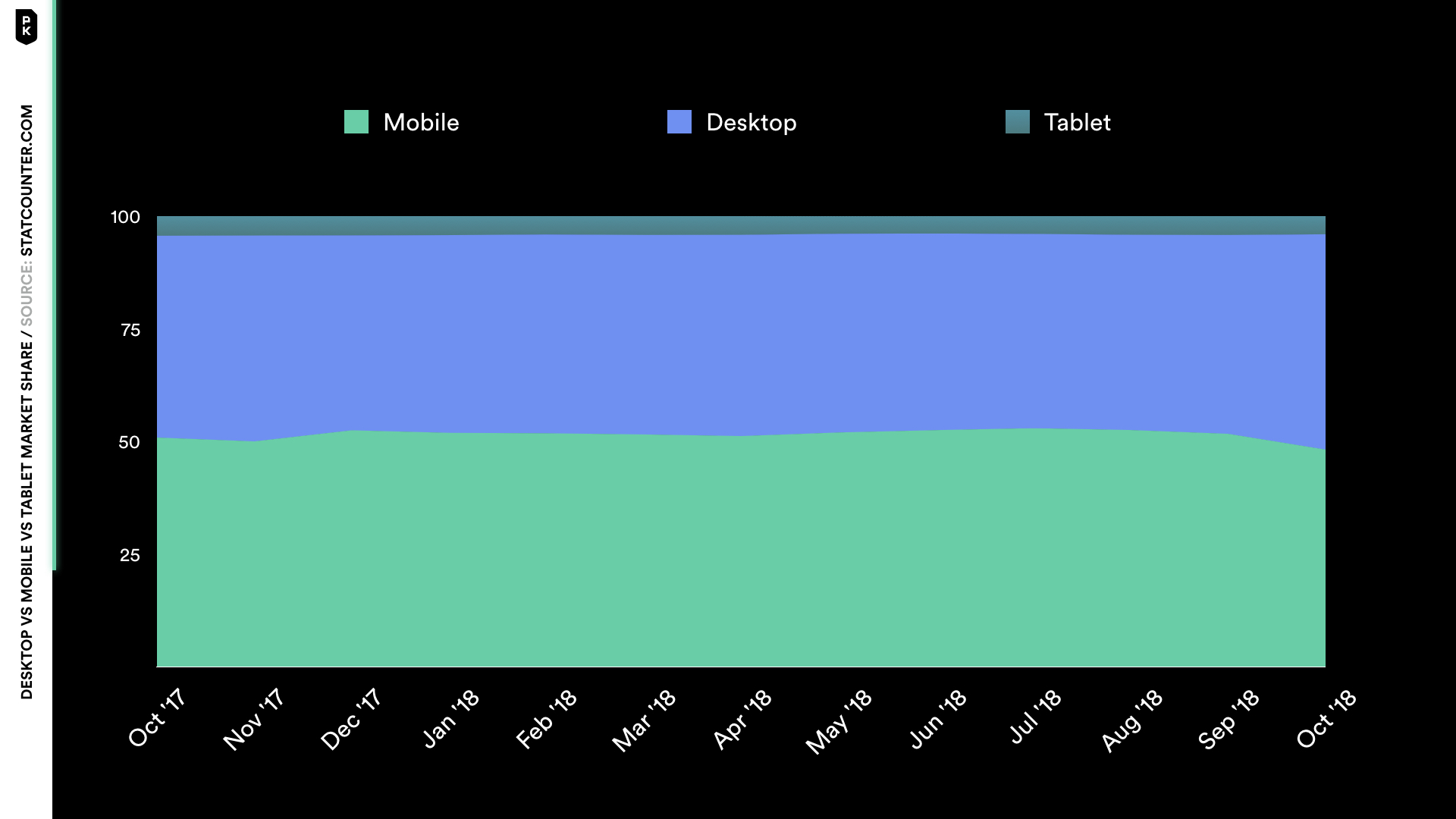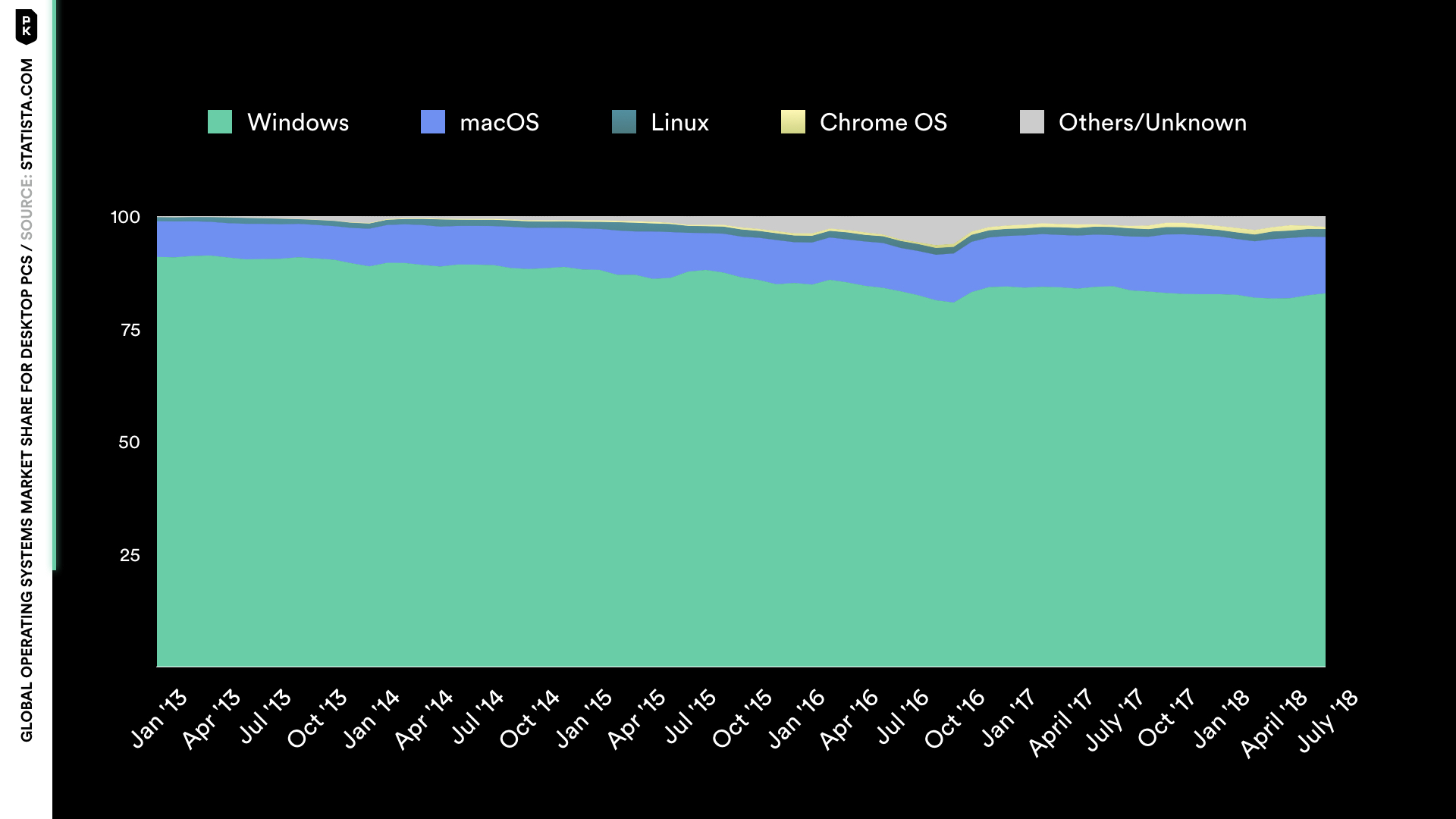
- 2 Min Read / Blog / 3.2.2020

Fewer and fewer Android apps support devices with larger screens, but all that could be about to change with the release of Google’s Android Pixelbook tablet. Over the past few years, sales of Android tablets has actually been decreasing. This could be due to the fact that big name manufacturers aren’t building Android apps for tablets, leaving Android tablets a bit behind as Android smartphones remain competitive.

Desktop vs Tablet vs Mobile Global Market Share
Historically, software updates on Android tablets come seldom, if they come at all. And tablet product lines are slowly disappearing. Even Google had removed its tablet section from their Play Store, though it was shortly re-listed. (They claimed it was a bug, but I’m not so sure.)
However, screen sizes are changing and as tablets become increasingly powerful, they’re gaining market share in mobile computing. Here are some reasons why building Android apps for tablets may be worth your development efforts.
On October 9th, 2018, Google held its Pixel 3 event and presented it’s latest flagship phone, the new Pixel 3. While the Pixel 3 phone was the highlight of the show, Google also introduced other products and one of them is the most recent Pixelbook, powered by Chrome OS. Chrome OS is a fairly new operating system created by Google and targeted toward light to medium-usage users. Chrome OS also has full access to the Google Play Store and can run Android apps.
Manufacturers are creating more and more hybrid tablet/laptops that are powered by Chrome OS, and they all support Android apps. This is a huge deal because any user with a Chrome OS notebook will be able to download any app from the Google Play Store and run it as if it were running on their Android phone.

Chrome OS’ market share could be held back by a lack of Android app-tablet compatibility
Chrome OS notebooks are gaining market share every week, and any Android app not built for tablet screens is going to miss out on opportunities for a great user experience. Can you even imagine consistently using iPhone-sized apps on an iPad? It’s an unreasonable expectation to have of your users. And if Chrome OS-supporting Android apps isn’t enough to convince you to add tablet support to your app, consider that even Windows and Mac users can install and use Android apps with the cloud-based BlueStacks service. In addition to BlueStack on Windows 10, Microsoft is also working on adding Android mirroring support that will enable users to use any app on their Windows PC without any third party software.
It could be that proper Android tablets are on their way out—even with the launch of the new Pixelbook—and that tablet/laptop hybrids are the way into the future. Either way, if your app is not designed to support screens larger than a smartphone’s, then your app will most likely be rated negatively in the Play Store and will suffer uninstalls. Negative activity on the Play Store is likely to impact your app’s ranking, adoption, and engagement. In short, building apps for Android tablets and smartphones both is the way to go. All apps should be responsive.
If you want to learn more about best practices with Android apps, Google’s Material Design and Android Developer docs on tablet app quality are great resources on creating designs for tablets. Not every Android app needs to support a large screen, but any app that could, should.